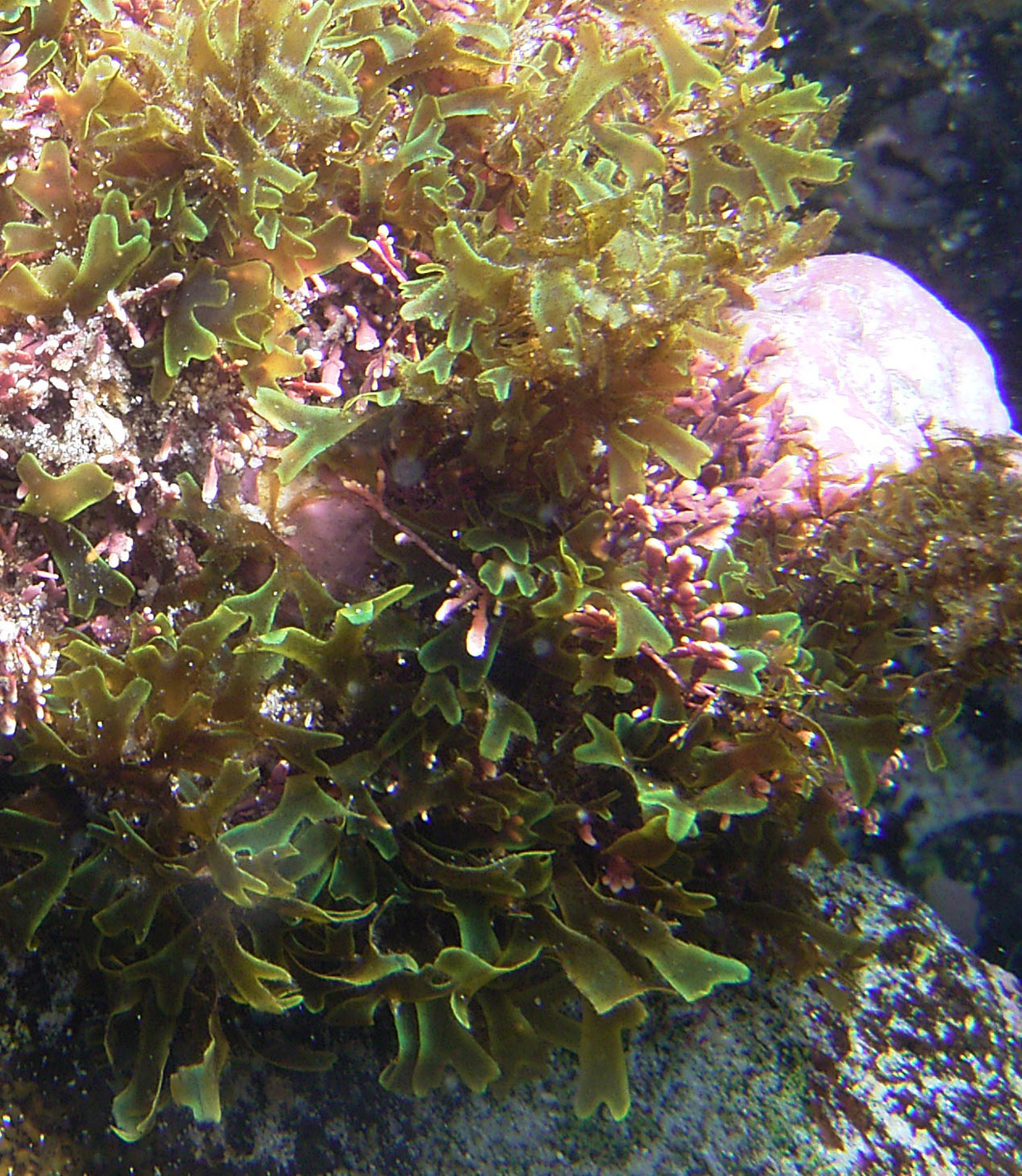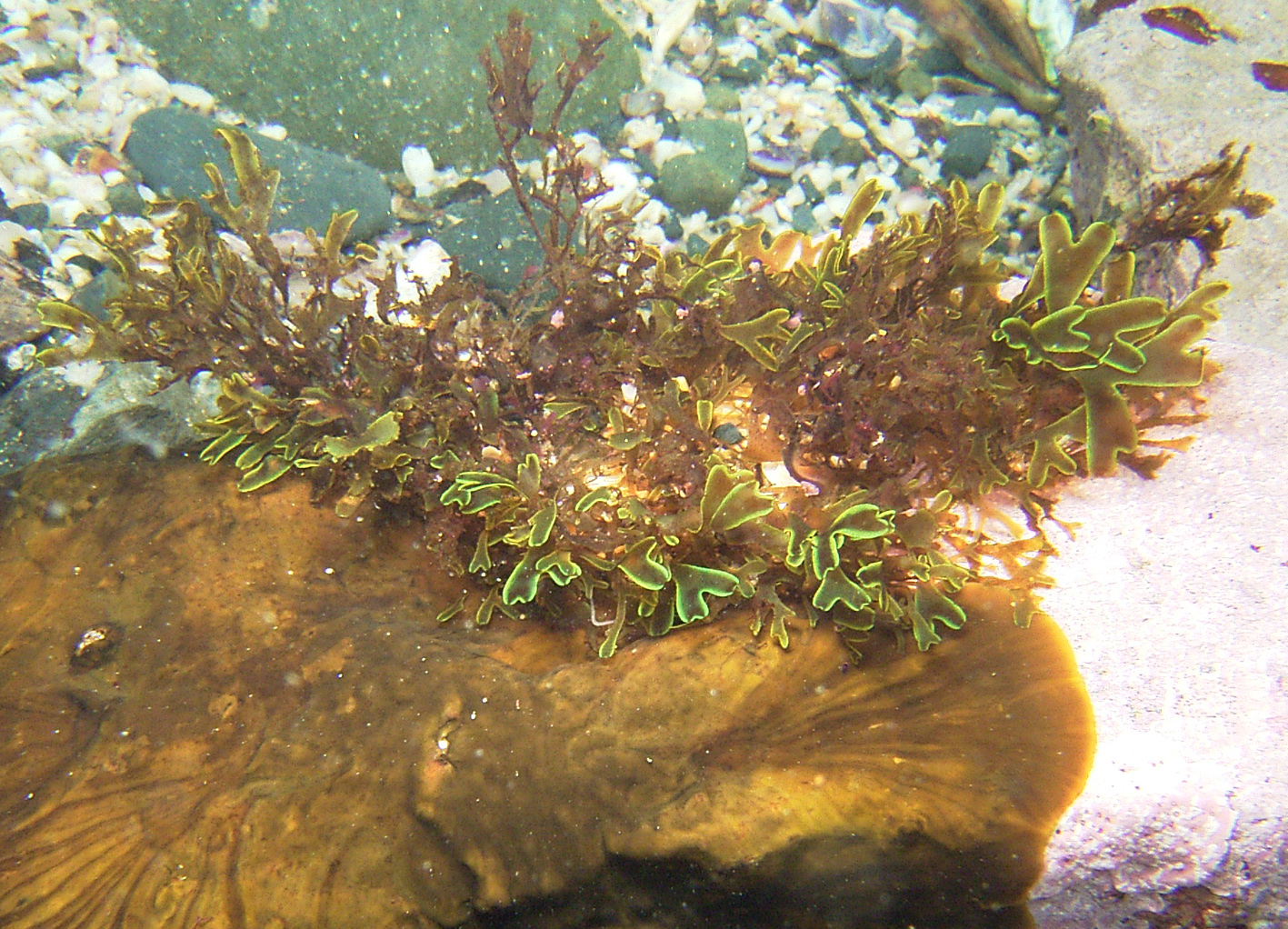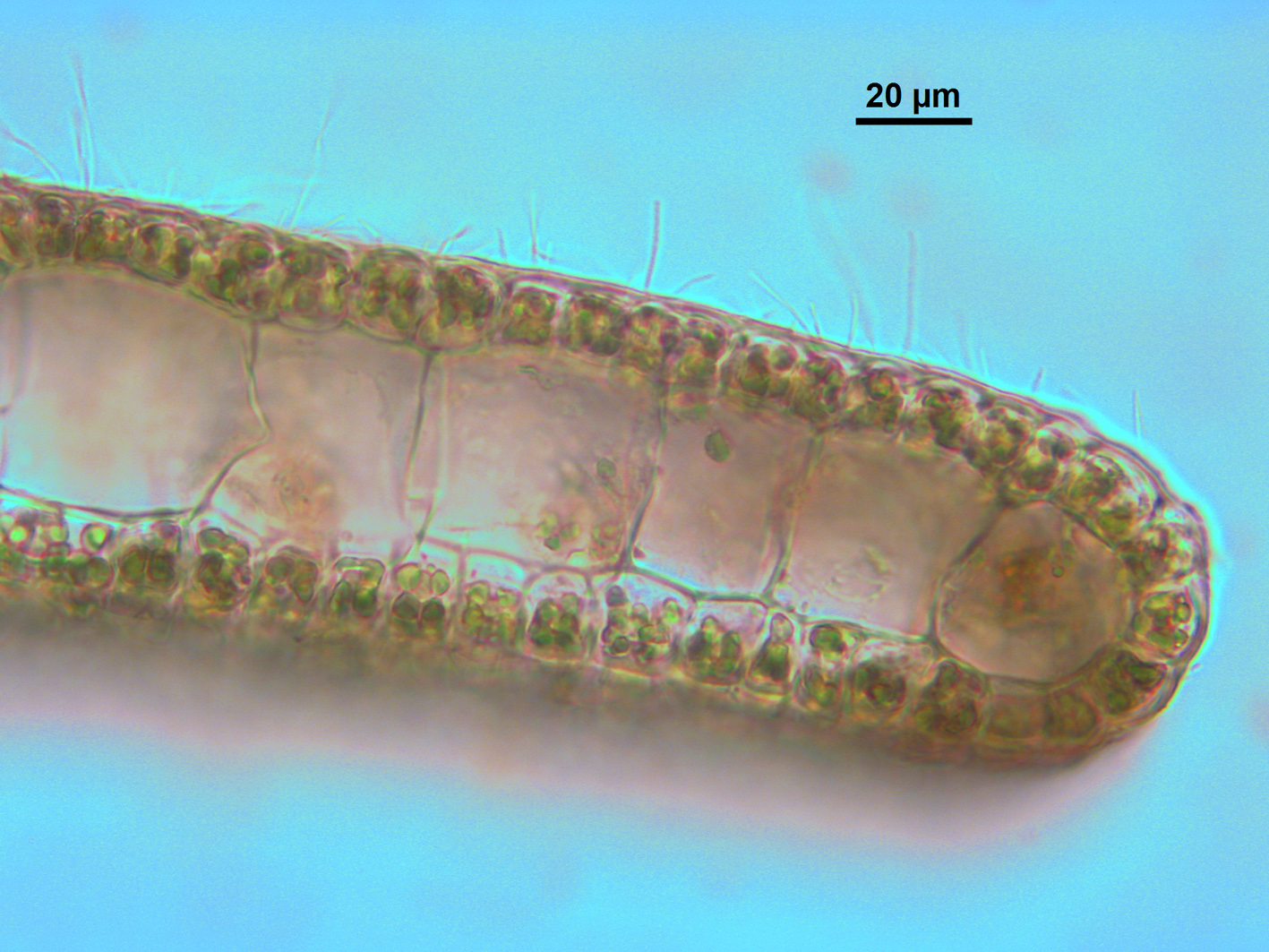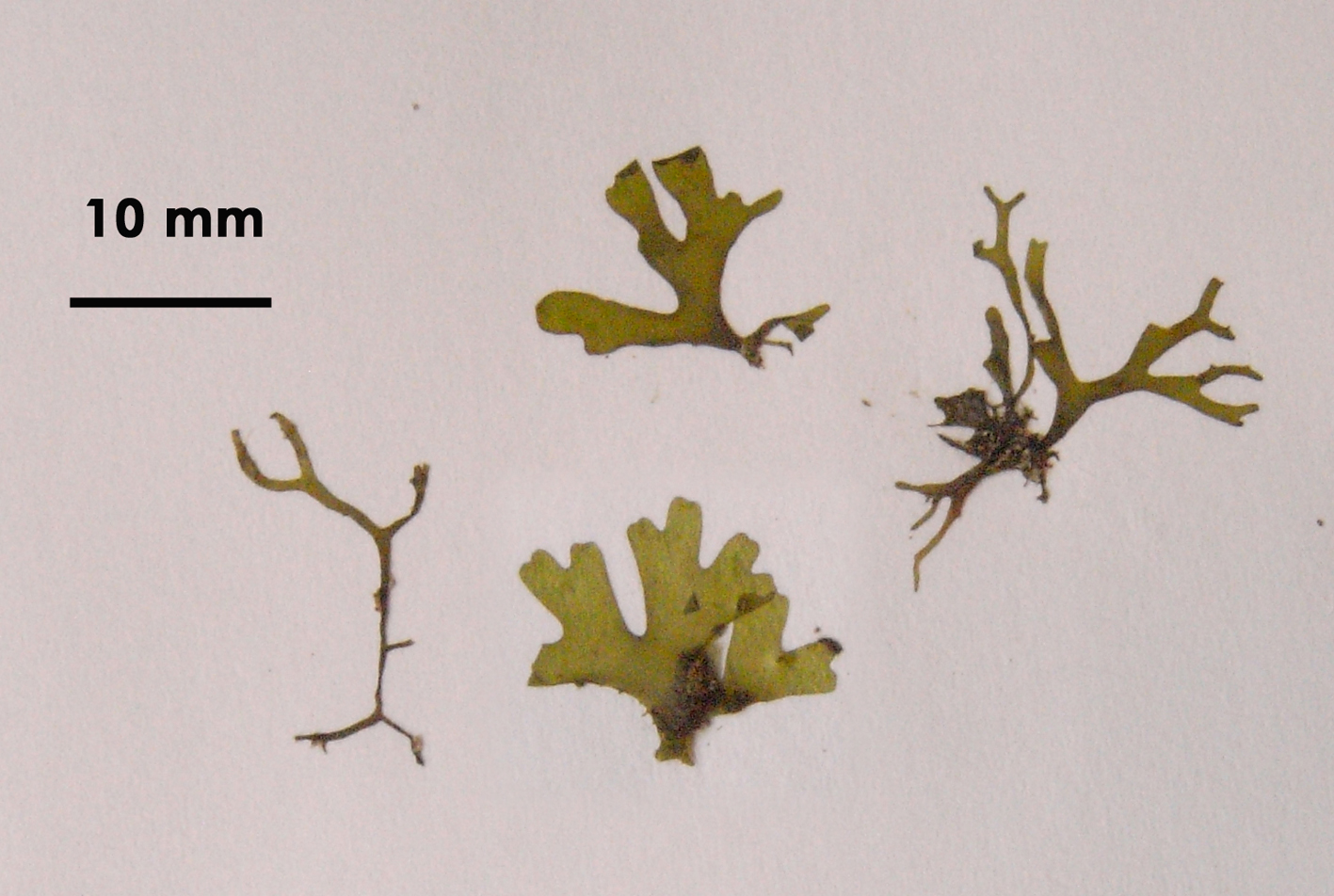Seaweeds of the South African South Coast


Order Dictyotales
Family Dictyotaceae
Dictyota sp1
Plants olive-brown, forming tufts or turfs ca. 10 mm high on various substrata. Thalli sometimes with distinctive bright green edges in situ (these disappear in pressed or preserved material). Erect axes up to 20 (-25) mm long, arising from a narrow base attached by rhizoidal holdfast, usually curving towards the substratum distally. Thalli often with basal repent branches. Branching dichotomous/subdichotomous; apices blunt to rounded (obtuse). Axes usually up to 1.5-2 mm wide, more regularly branched in up to 3 orders; many plants also with some narrower axes (to 0.5-0.8 mm wide) that are more irregularly branched in up to 4 orders. Axes sometimes with small marginal branchlets. Main erect axes about 110 µm thick near base, 60-80 µm thick near apices. Anatomy typical of Dictyota, with a single layer of large medullary cells (in cross section 40-90 µm high, depending on thallus region) and a layer of small pigmented cortical cells on each side (about 15 µm high in cross section). Reproductive structures not seen.
A current DNA study of Dictyota from many worldwide localities, including many in southern Africa, shows this to be a distinct species (Olivier De Clerck, pers. comm), although it was often confused with “D. dichotoma”, which is, however, molecularly and morphologically different.
Collections, ecology and regional distribution
Recorded from False Bay to Isipingo, Kwazulu-Natal. A common but not abundant species in wave-washed areas on various substrata (rock, Pyura tests, Gunnarea) in the lower eulittoral , shallow sublittoral, and in pools. It is often but not always marked by distinctive, bright green edges.
Note: In the current study by De Clerck this species is provisionally denoted as Dictyota sp_7.

Dictyota sp 1, showing bright green edges (Arniston).

Dictyota sp 1, showing bright green edges; growing on a limpet (hidden), on a crust of Zeacarpa leiomorpha (Natures Valley).

Dictyota sp 1, cross section at edge of blade, near blade tip, showing large medullary and small cortical cells.

Dictyota sp 1, showing range of frond shapes
Cite this record as:
Anderson RJ, Stegenga H, Bolton JJ. 2016. Seaweeds of the South African South Coast.
World Wide Web electronic publication, University of Cape Town, http://southafrseaweeds.uct.ac.za; Accessed on 07 January 2026.